Assignment 2 - Cultural Landscape
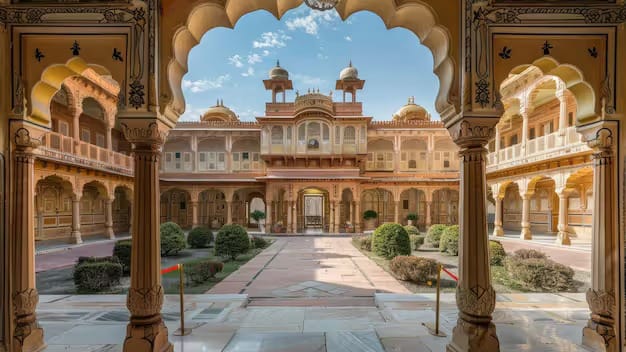
Part A:
Explain what landscapes teach us about our human-nature relationships. For example, you may consider the following questions: How do people bring the elements of nature into their built environment and why? What elements of nature do they include in the landscape and why? What elements do they exclude and why? What cultural values and ideas do these landscapes or this landscape reflect? - Plus other…
I think humans are deeply intertwined with nature, and we use it to nourish ourselves in many ways, like food, medicine, and design (mental health). The landscapes we see around us shed a light on how people use that space and the human-nature relationships that environment has nurtured. I will be drawing from my past experiences in life about places that have made me admire and feel allured by nature or its cultural environment.
I have a lot to learn learn about my Indian roots, having moved away from India at a young age. Of the few memories I can can recall from childhood these remind me of cultural landscapes I noticed around me:


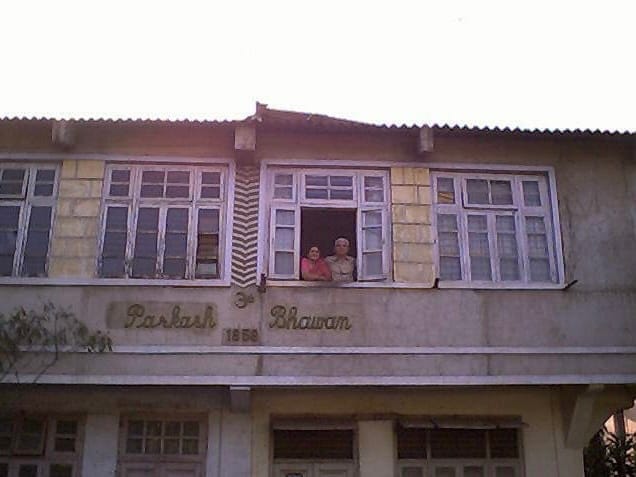

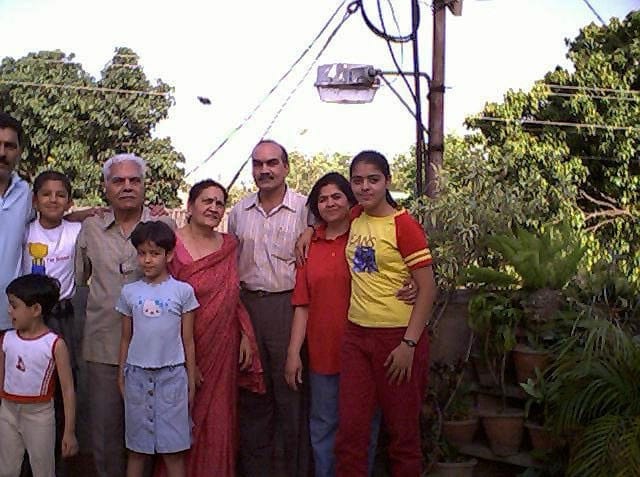
These are pictures of my home in Indian, we were taking photos on the Terrace. I remember the way my home was made of concrete and we would open our windows for fresh air, or how I would try to sneak away to the terrace during monsoon season to feel the rain hit my skin, even though I was warned/urged to come inside, in fears of catching a cold.
On this memory/feeling I wrote this essay:

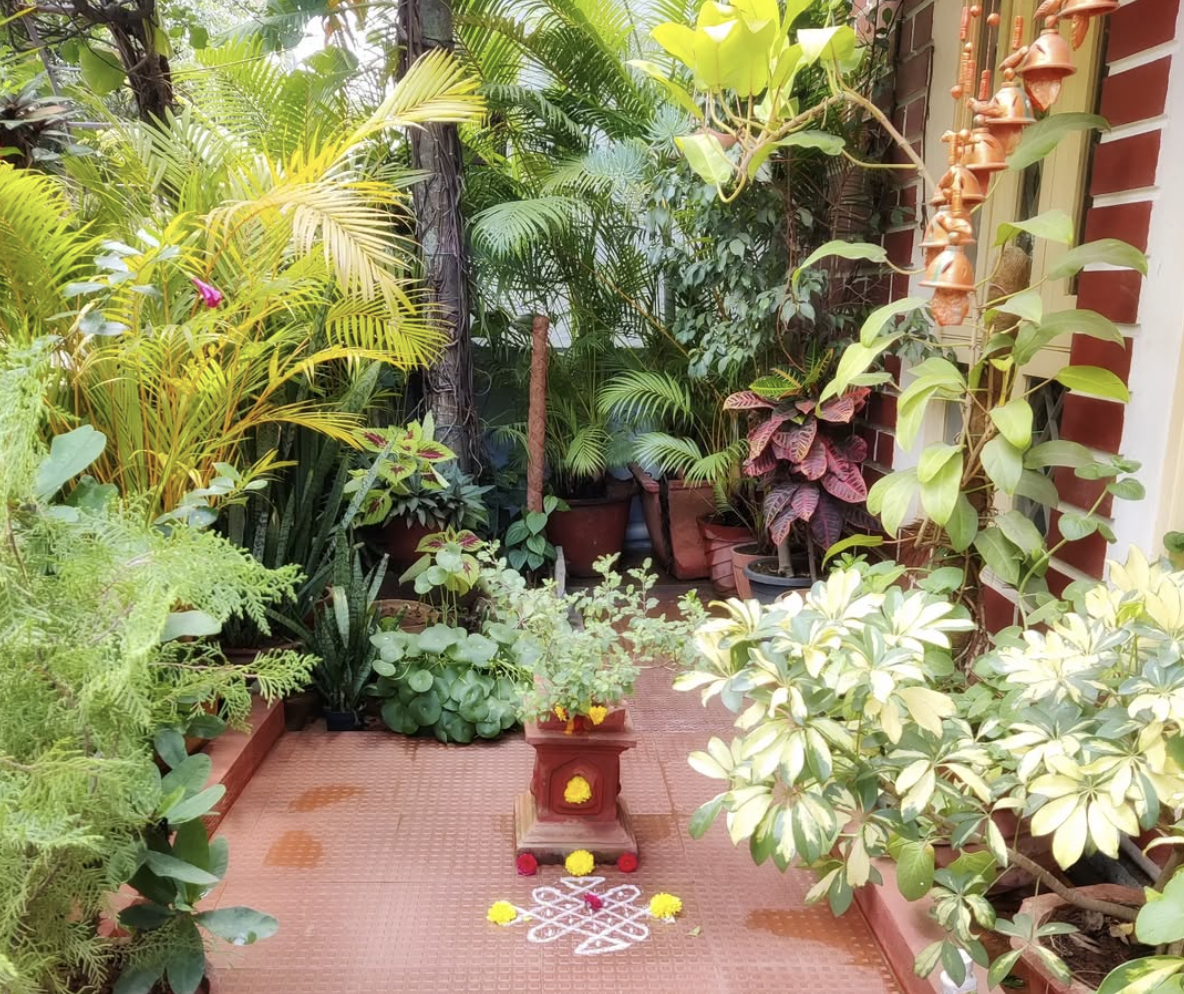
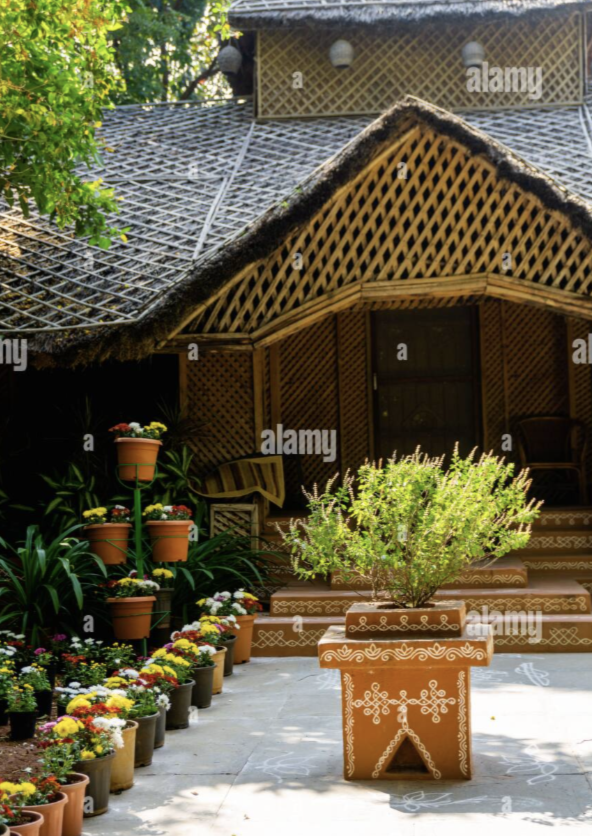

A practice in some followed by some Hindu household's is to plant a Tulsi (holy basil) plant in front their home, that they look after/pray to daily. It is believed to bring positivity, luck, and prosperity to the home. Tulsi also symbolizes purity/devotion and is seen as the manifestation of the goddess Lakshmi. I think this ritual that many people follow is rooted in tradition/culture, and it can form a cultural landscape around someones home. Since they care/worship that deeply for a plant daily, they may fall in love with the process of gardening and grow their at home collections of plants.
Another is the school I attend in India and it community based layout, centred around a open-roof courtyard. This open space brought in so much light and was even more magical when it was pouring rain and people could stand on the outskirts seeking shelter from the rain.

I cannot remember if we used to sing the national anthem in the courtyard daily or in our classrooms.


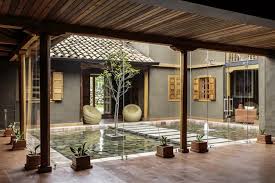
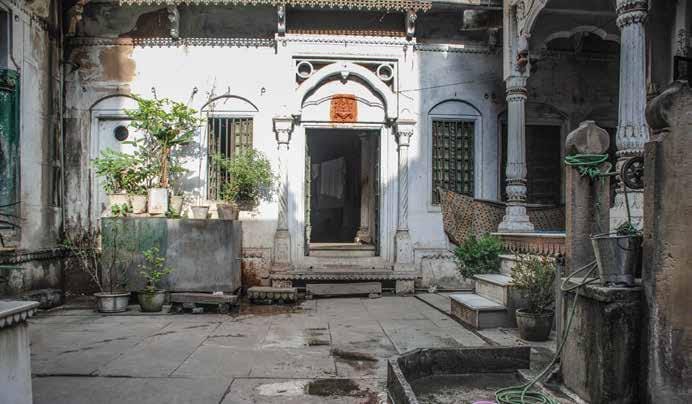
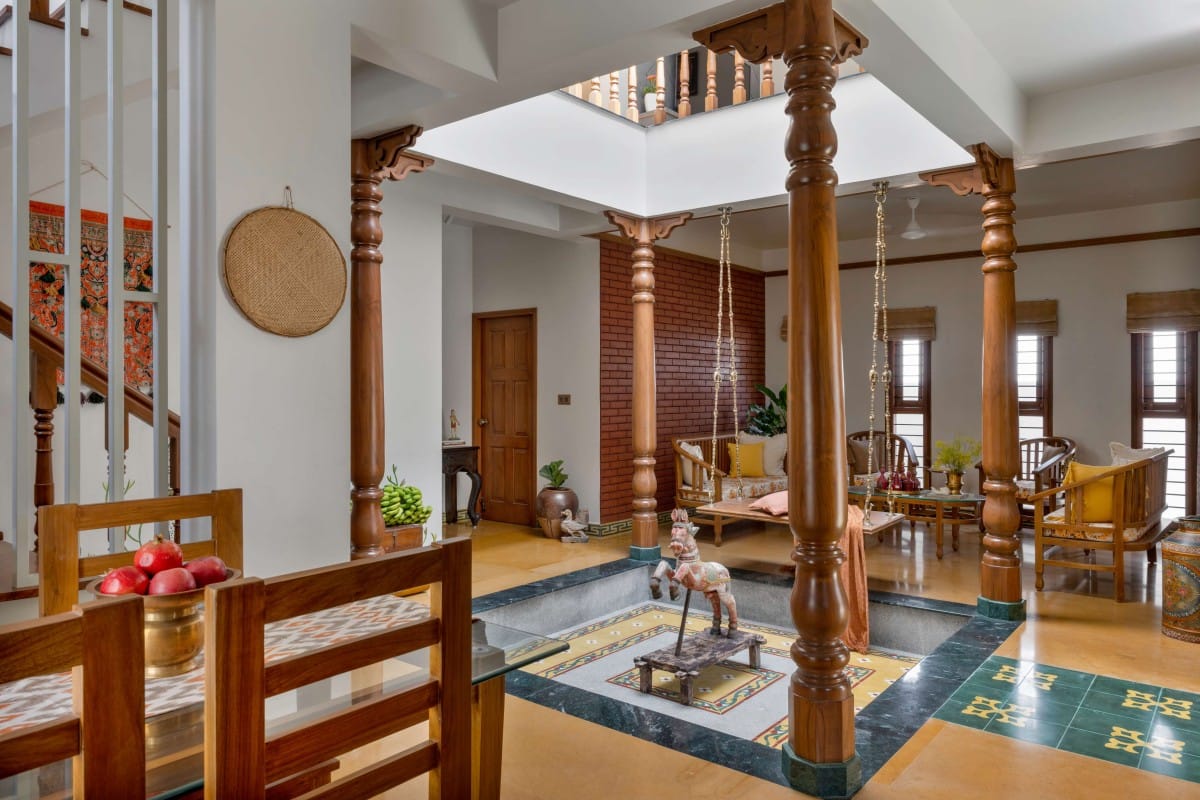


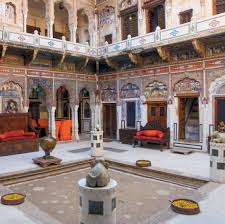
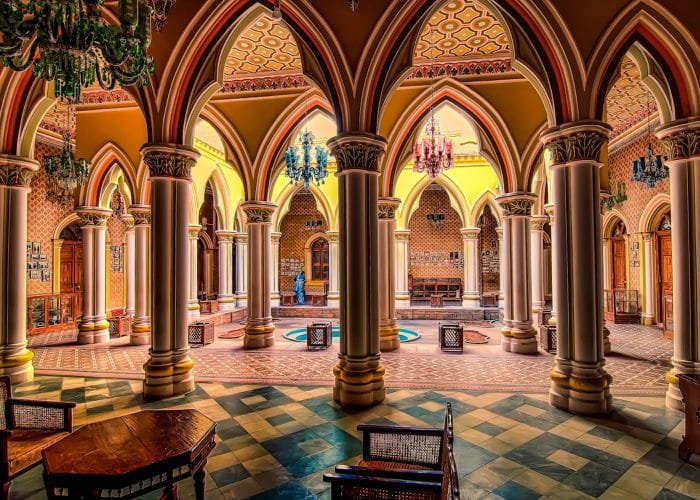
Spaces centred around a courtyard.
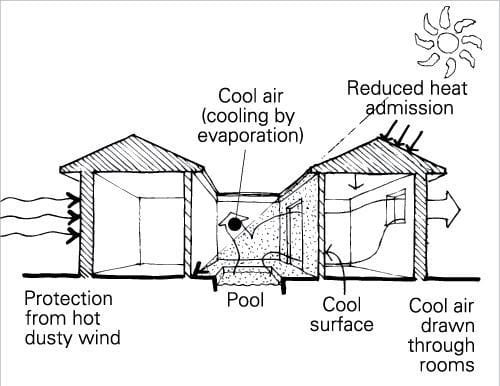
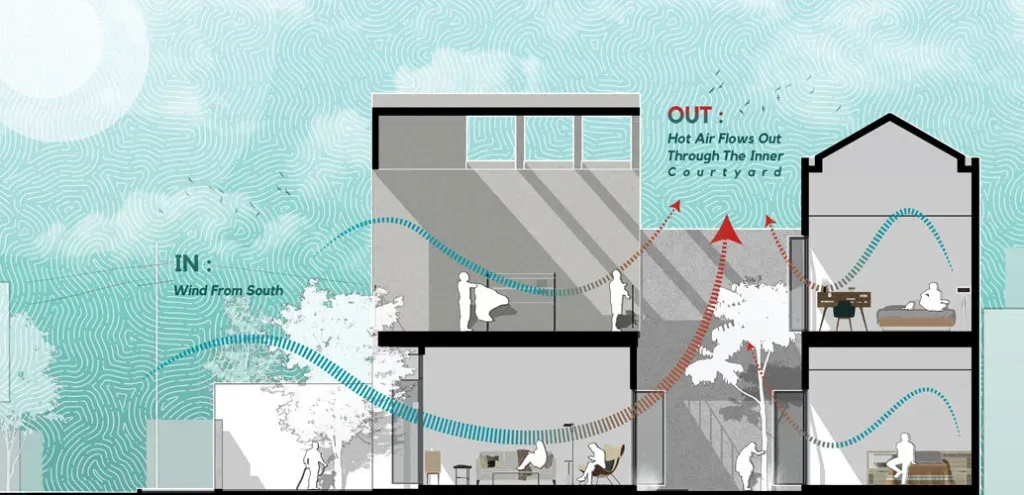
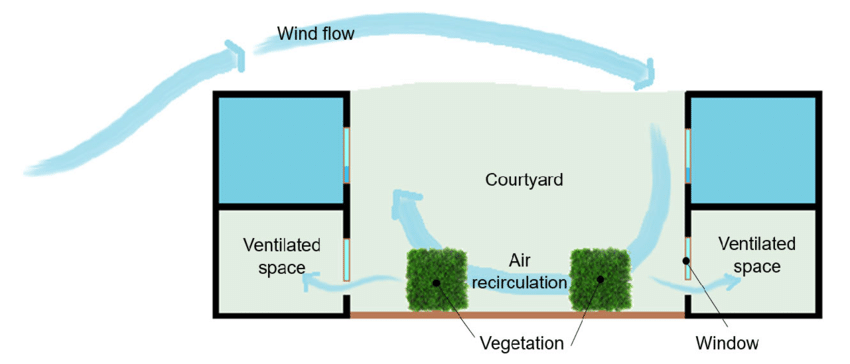
These types of courtyards in housing or public buildings are a popular design in India, they help provide natural cooling/light/ventilation, privacy, nature and a sense of community. A nice escape from hot humid Indian weather.
This open courtyard space serves a multitude of purposes, connecting humans to the natural elements occurring outside, allowing nature right into the centre of the home. Often building the home around the courtyard like it is the 'soul' of the home. It also makes a great inviting space to hold gathering and to practice culture/traditions (like Havan -prayers held around a fire). If I had a courtyard in my home, it would be my go to spot to do everything, especially garden, watch the rain or dancing in it.
I think these communal courtyards foster a social collaborative cultural environment. Indian households tend to live in joint families so this environment serves them well.
You may have noticed the Tulsi plant outside the main entrance of these 2 home tour videos.
I think the cultural values and ideas these landscape reflect is community, family, tradition and history. This type of building design is old and with all the perks it brings, it makes sense why it has survived so long. I think the idea behind the design of this space is to build around a heart/base of nature that we are all inherently connected to. A space everyone is drawn to creating a natural hotspot for connection with each other, nature, and tradition.
Part B:
Provide your reasoned opinion of the following statement:
‘What might have been?’ is one of the most interesting questions that historical cultural geographers might consider asking when conducting studies of landscape change.
‘What might have been?’ Is a question that one can easily get lost in especially in the topics of history and climate change. An archaeologist likely ponders on wishing for more evidence lost throughout time so that they could paint a better picture of life in that era. Or any person wondering what might have been if climate change did not occur, what landscapes/species would still be here and not forever lost before discovered, like some coral reefs or deep ocean spieces. This question is also fun to consider in aspects of communities mixing, like what if a Chinese community instead of British colonists came to North America, how would the landscape look different? What fusion of Indigenous and Chinese cultures (food, building, traditions, etc.) would exist today? Since our would is so globalized I wonder if this fusion people/cultures is good for nature, because we all have different ways of doing the same things. Allthough locals have the advantage of time knowing what works in harmony with their environment, I hope local specifc knowledge is not lost in this “fusion” and landscapes stay unique and win against the popular culture that comes with globalization. The answers to the question ‘What might have been?’ can be endless, like: if these people had not moved here, or brought disease with them, if genetically modified seeds did not exist, if that train track had not been built there, and if that natural disaster did not happen... the landscape would have been some other way. I think this question is a important question to ask when conducting studies of landscape change because it can help analize the history, migration, construction, policy/law or other influences on the place that contributed to the landscape changing in a certain way.
Part C:
Provide a factual statement on the following topic: The changing Prairie landscape, from about 1500 to the present.
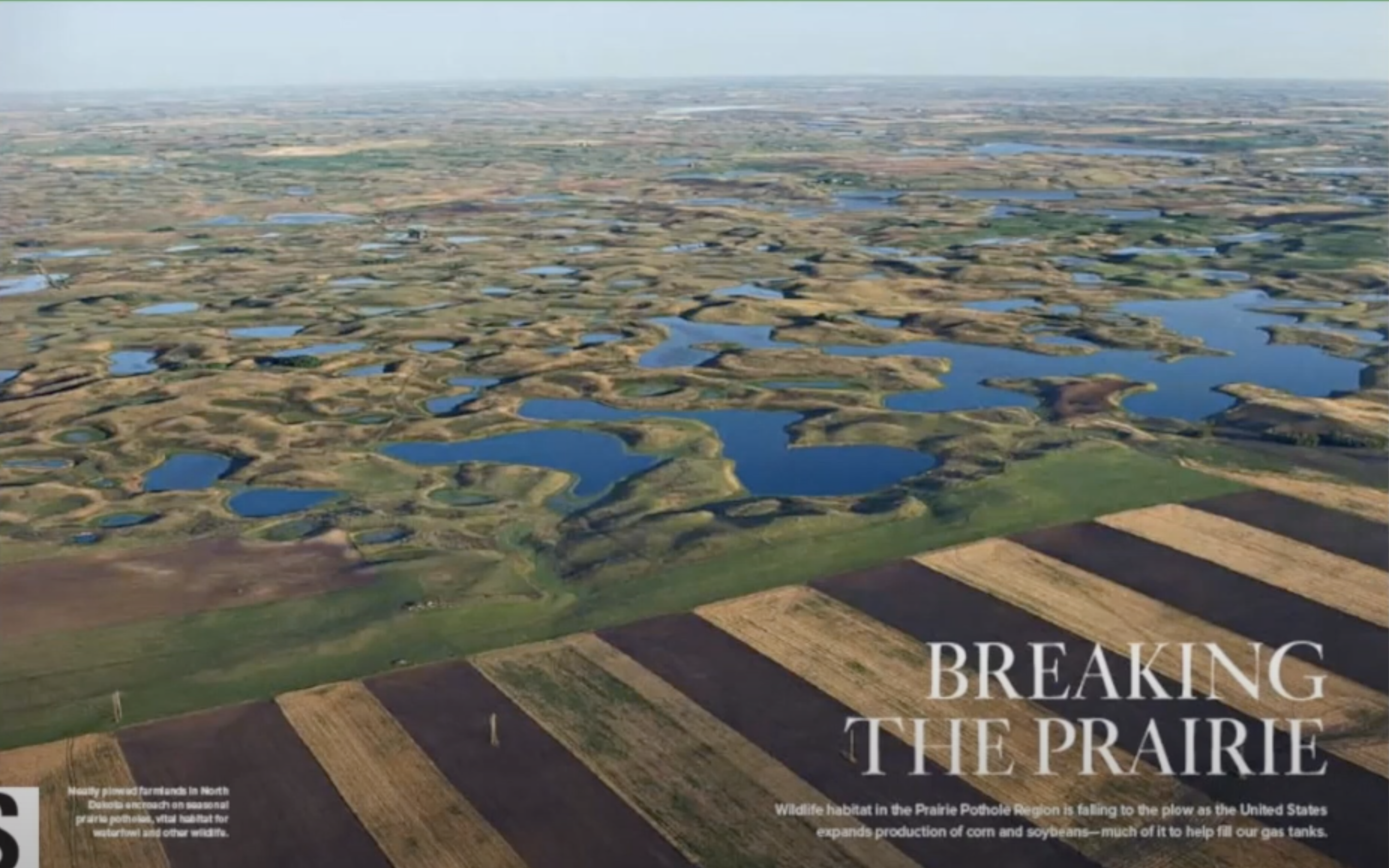
When thinking about the how the Prairie landscape has changed from 1500 to the present, what stands out to me is the loss of Wetland habitats. "Manitoba has lost 40% to 70% of these wetlands since the beginning of European settlement". Wetlands are important riparian areas that filter/buffer water purifying/slowing the runoff of water, recharge the water table, erosion prevention, carbon sinks, and maintain unique prairie biodiversity.
Manitoba is the most abundant in wetland habitats in Canada, but we also face rapid loss of wetlands, as farmers drain wetlands into ditches or bigger bodies of water, so they save time by not driving their machinery around the wetlands on their properties. This issue first came on my radar when I attended a University of Manitoba Wetlanders club meeting. Learning about the importance of wetlands/riparian areas and how many acres of wetland habitat is lost every year and their loss has changes the landscape over the decades.
On the hopeful side, I learned of the programs Duck Unlimited does with farmers across the prairies to incentivize framers not to drain the wetland habitat on their properties. I could not find the video that showed wetland loss occurring over the decades in the prairies.
One of the programs Duck Unlimited offers. Link.
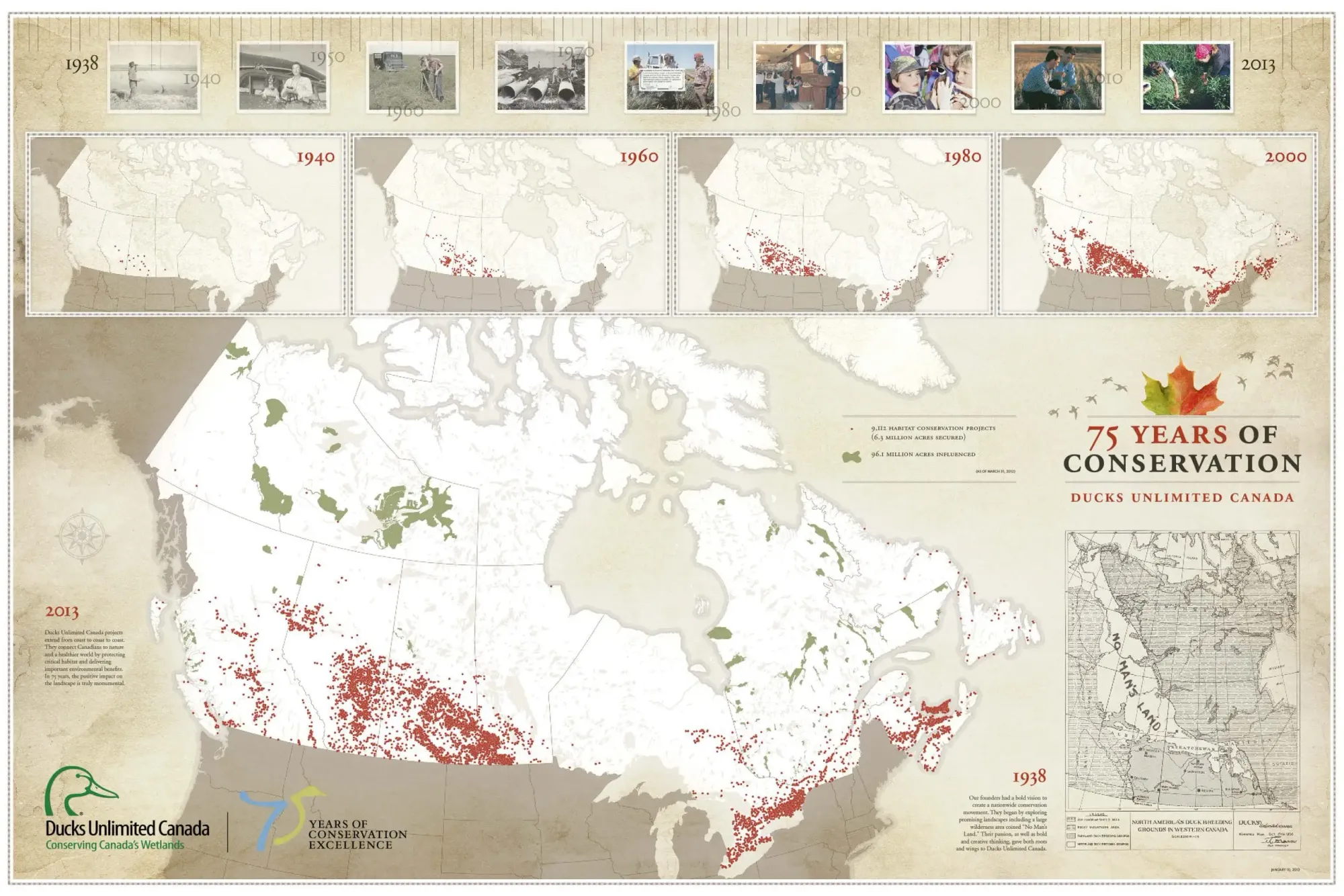
Hope.
The loss of wetland habitats speaks to our human-nature relationship, where the culture/social norm is to keep making revenue and the environment is just another resource to achieve that goal. Our values have forgotten the importance of working with nature to attain the same goals. People don’t know/remember the benefits of leaving the natural landscape intact.
Bibliography:
- Bartzen, Blake A., et al. “Trends in Agricultural Impact and Recovery of Wetlands in Prairie Canada.” Ecological Applications, vol. 20, no. 2, 2010, pp. 525–38, https://doi.org/10.1890/08-1650.1.
- Wetlands and Riparian Areas
Clayton H. Riddell Faculty of Environment, Earth, and Resources, University of Manitoba
GEOG 2630: Geography of Culture and Environment
Dr. Olga Shugurova
Member discussion